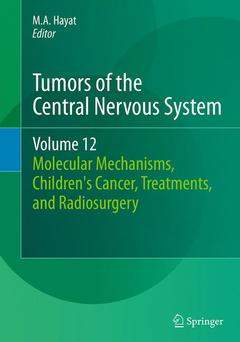Description
Tumors of the Central Nervous System, Volume 12, Softcover reprint of the original 1st ed. 2014
Molecular Mechanisms, Children's Cancer, Treatments, and Radiosurgery
Tumors of the Central Nervous System Series, Vol. 12
Coordinator: Hayat M.A.
Language: English
Subjects for Tumors of the Central Nervous System, Volume 12:
Publication date: 09-2016
Support: Print on demand
Publication date: 10-2013
386 p. · 17.8x25.4 cm · Hardback
Description
/li>Contents
/li>Comment
/li>
As in the case of its eleven predecessors in the series Tumors of the Central Nervous System, this volume is distinguished for its thorough approach, its roster of 92 distinguished contributors representing 11 different countries and its detailed examination of leading-edge technology and methods.
Volume 12: Molecular Mechanisms, Children?s Cancer, Treatments, and Radiosurgery offers a comprehensive review of the diagnosis, therapy and prognosis of brain and spinal cord tumors. Coverage extends to a large number of tumor types, including neuroblastoma, medulloblastoma, meningioma and chordoma. Molecular profiling of brain tumors to select appropriate therapy in clinical trials of brain tumors is discussed in detail, as is the classification/diagnosis of brain tumors based on function analysis. CDK6 as the molecular regulator of neuronal differentiation in the adult brain, and the role of aquaporins in human brain tumor growth are explained. Discussion also includes tumors affecting children, including neuroblastoma and medulloblastoma. A full chapter is devoted to the role of molecular genetic alterations in medulloblastoma, and another examines survival differences between children and adults with medulloblastoma. The use of various types of imaging methods to diagnose brain tumors is explained. In-depth discussion of treatment options includes stereotactic radiosurgery, endoscopic neurosurgery, electrochemotherapy, transsphenoidal surgery, focal ablation, whole brain radiation therapy and recraniotomy.




